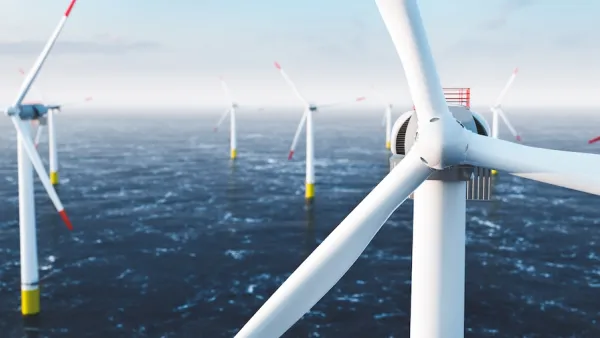A new study shows that wind farms have a small but temporary negative impact on nearby property prices.

A new study will undoubtedly fuel the debate over how wind energy projects impact surrounding communities, writes Dan Gearino in Inside Clean Energy. The study reveals that “properties within a mile of a proposed wind farm experience an average decrease in value of 11 percent following the announcement of the project, compared to properties located three to five miles away.” However, the effect is only temporary, and “the difference fades away a few years after the project is operational to the point that properties within a mile of a project have values that are indistinguishable from those three to five miles from a project.”
Researcher Ben Hoen says the paper doesn’t account for the potential benefits of wind farms, which could bring new revenue and jobs to local communities and reduce local taxes. “The paper also finds that the negative effects on property values were apparent for wind farms near metro areas, while the effects were not apparent outside of metro areas.”
FULL STORY: Do Wind Farms Really Affect Property Values? A New Study Provides the Most Substantial Answer to Date.

National Parks Layoffs Will Cause Communities to Lose Billions
Thousands of essential park workers were laid off this week, just before the busy spring break season.

Retro-silient?: America’s First “Eco-burb,” The Woodlands Turns 50
A master-planned community north of Houston offers lessons on green infrastructure and resilient design, but falls short of its founder’s lofty affordability and walkability goals.

Delivering for America Plan Will Downgrade Mail Service in at Least 49.5 Percent of Zip Codes
Republican and Democrat lawmakers criticize the plan for its disproportionate negative impact on rural communities.

Test News Post 1
This is a summary

Test News Headline 46
Test for the image on the front page.

Balancing Bombs and Butterflies: How the National Guard Protects a Rare Species
The National Guard at Fort Indiantown Gap uses GIS technology and land management strategies to balance military training with conservation efforts, ensuring the survival of the rare eastern regal fritillary butterfly.
Urban Design for Planners 1: Software Tools
This six-course series explores essential urban design concepts using open source software and equips planners with the tools they need to participate fully in the urban design process.
Planning for Universal Design
Learn the tools for implementing Universal Design in planning regulations.
EMC Planning Group, Inc.
Planetizen
Planetizen
Mpact (formerly Rail~Volution)
Great Falls Development Authority, Inc.
HUDs Office of Policy Development and Research
NYU Wagner Graduate School of Public Service




























